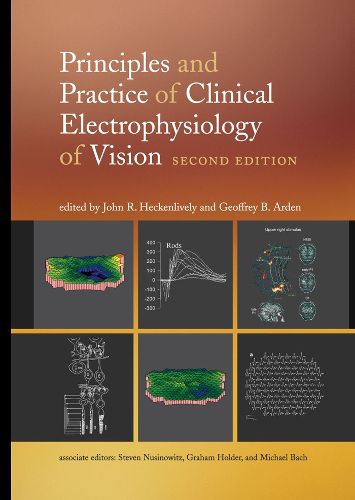Readings Newsletter
Become a Readings Member to make your shopping experience even easier.
Sign in or sign up for free!
You’re not far away from qualifying for FREE standard shipping within Australia
You’ve qualified for FREE standard shipping within Australia
The cart is loading…






This is the long-awaited second edition of an authoritative reference on electrophysiologic vision testing, including detailed information on techniques and problems, basic physiology and anatomy, theoretical concepts, and clinical findings; with extensive new material. This authoritative text is the most comprehensive reference available on electrophysiologic vision testing, offering both practical information on techniques and problems, as well as basic physiology and anatomy, theoretical concepts, and clinical correlations. The second edition, which succeeds the widely used, but now out-of-print first edition, offers extensive new material and updated information: 65 of the 84 chapters are completely new, with the changes reflecting recent advances in the field. The book will continue to be an essential resource for practitioners and scholars from a range of disciplines within vision science. The contributions not only cover new information - important material that is likely to become more important in the next decade - but also offer a long-range perspective on the field and its remarkable development in the last century. After discussing the history and background of clinical electrophysiology, the book introduces the anatomy of the retina and principles of cell biology in the visual pathways at the molecular, physiological, and biochemical levels. It relates these new findings to the techniques and interpretations of clinical tests, including the electro-oculogram (EOG), electroretinogram (ERG), and visual evoked potentials (VEP), which are discussed in detail, as are equipment, data acquisition and analysis, principles and protocols for clinical testing, diseases and dysfunction, and animal testing. Notable additions for this edition include chapters on the origin of electroretinogram waveforms, multifocal techniques, testing in standard laboratory animals, recent advances in analysis of abnormalities in disease, and the applications of these techniques to the study of genetic abnormalities.
$9.00 standard shipping within Australia
FREE standard shipping within Australia for orders over $100.00
Express & International shipping calculated at checkout
Stock availability can be subject to change without notice. We recommend calling the shop or contacting our online team to check availability of low stock items. Please see our Shopping Online page for more details.
This is the long-awaited second edition of an authoritative reference on electrophysiologic vision testing, including detailed information on techniques and problems, basic physiology and anatomy, theoretical concepts, and clinical findings; with extensive new material. This authoritative text is the most comprehensive reference available on electrophysiologic vision testing, offering both practical information on techniques and problems, as well as basic physiology and anatomy, theoretical concepts, and clinical correlations. The second edition, which succeeds the widely used, but now out-of-print first edition, offers extensive new material and updated information: 65 of the 84 chapters are completely new, with the changes reflecting recent advances in the field. The book will continue to be an essential resource for practitioners and scholars from a range of disciplines within vision science. The contributions not only cover new information - important material that is likely to become more important in the next decade - but also offer a long-range perspective on the field and its remarkable development in the last century. After discussing the history and background of clinical electrophysiology, the book introduces the anatomy of the retina and principles of cell biology in the visual pathways at the molecular, physiological, and biochemical levels. It relates these new findings to the techniques and interpretations of clinical tests, including the electro-oculogram (EOG), electroretinogram (ERG), and visual evoked potentials (VEP), which are discussed in detail, as are equipment, data acquisition and analysis, principles and protocols for clinical testing, diseases and dysfunction, and animal testing. Notable additions for this edition include chapters on the origin of electroretinogram waveforms, multifocal techniques, testing in standard laboratory animals, recent advances in analysis of abnormalities in disease, and the applications of these techniques to the study of genetic abnormalities.